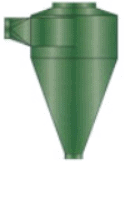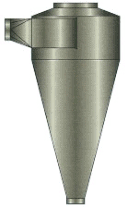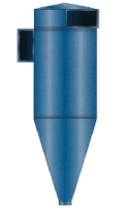Cyclonic separators are indispensable tools in the world of industrial air quality management, and their efficiency in dust collection is well-known. However, when exploring options for dust collection systems, you might come across terms like “cyclonic separator” and “cyclone dust separator.” Are they the same, or do they have distinct differences?
In this article, we’ll clarify the distinction and shed light on three models: Model K, Model KL, and Model RHV.
Understanding Cyclonic Separators and Cyclone Dust Separators
Cyclonic Separator and Cyclone Dust Separator are often used interchangeably, and they share a fundamental principle: separating particles from air using centrifugal force. These systems work on the same core concept, where dust-laden air enters a cyclonic chamber and spirals downward, causing the dust particles to be separated and collected.
However, it’s essential to note that the term “Cyclone Dust Separator” is a specific subtype of cyclonic separator, primarily designed for dust and particulate matter collection.
Our Models:
Model K:

Our Model K is a workhorse in the world of separators. Designed for high-efficiency dust separation, it’s perfect for industries with demanding dust collection needs. With its robust construction and precision engineering, Model K ensures that your workspace remains clean and safe.
Model KL:

Model KL takes separation to the next level. It incorporates advanced features for enhanced performance and versatility. This model is designed to handle a wide range of dust types and can adapt to various industrial environments. When you need a top-tier cyclonic separator, Model KL is your go-to choice.
Model RHV:

When you require a compact yet powerful solution, look no further than Model RHV. This separator is engineered for efficiency and space-saving convenience. Its design makes it ideal for facilities with limited space while maintaining high dust collection efficiency.
The Benefits of Choosing the Right Separator
- Dust Collection Efficiency:
Both separators, including our Models K, KL, and RHV, excel at efficiently removing dust and particulate matter from the air, ensuring a cleaner, healthier work environment. - Longevity and Durability:
Our separators are built to last, with sturdy materials and precision engineering, ensuring they withstand the rigors of industrial use. - Space Optimization:
Depending on your workspace constraints, you can select the ideal model to fit your needs without compromising on performance. - Cost Savings: Efficient dust collection reduces maintenance costs and prolongs the lifespan of your equipment, contributing to long-term cost savings.
Conclusion
In summary, the terms “cyclonic separator” and “cyclone dust separator” are often used interchangeably and designed specifically for dust collection applications. At Rees Memphis, we offer three exceptional models, Model K, Model KL, and Model RHV, each tailored to meet the unique needs of your industry.
When selecting a separator for your dust collection system, consider the specific requirements of your workspace, the type of dust you need to handle, and the available space. Regardless of your choice, our models are engineered for efficiency, longevity, and cost-effectiveness, ensuring your workspace remains clean and safe.

